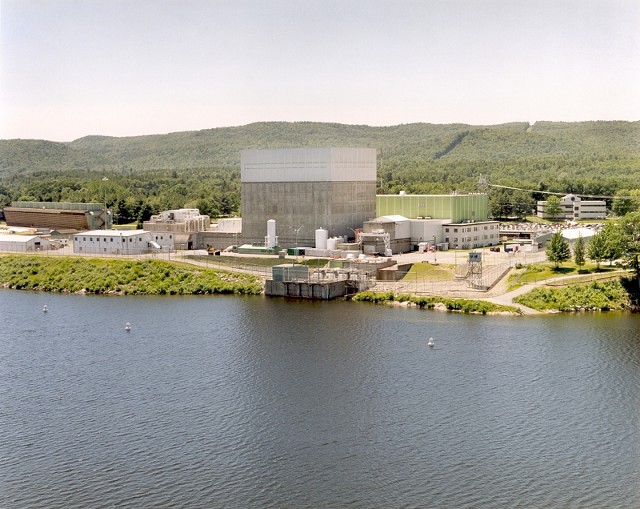
- Courtesy of Nuclear Regulatory Commission
- The Vermont Yankee plant
Readers of the venerable New York Times surely spotted the paper's recent feature on Burlington-based electric aviation company Beta Technologies.
The initial version of the story, though, may have tripped up Green Mountain State readers, who came upon the curious claim that Vermont uses the most nuclear power of any state. That hasn't been true since the 2014 closure of the Vermont Yankee Nuclear Power Station in Vernon, and the Times quickly corrected the record.
But anyone who thinks they're now enjoying nuclear-free electrons should think again.
A few years before the plant closed, Green Mountain Power, the state's largest electric utility, inked a deal to buy power from the nuclear power plant in Seabrook, N.H. A handful of small local power utilities followed suit.
GMP's deal, which expires in 2034, means 32 percent of the electricity its customers use is from nuclear power. Statewide, that figure is 28 percent.
So how much green energy does the Green Mountain State really use, anyway?
The state's electricity portfolio is considered 94 percent carbon-free, in part because nuclear energy, for all its faults, is one of the lowest-carbon energy sources available, on par with wind but far more reliable. That's why some climate advocates, including Bill McKibben, are rethinking their past opposition to nuclear power.
But while it's carbon-free, nuclear power is not considered renewable because generating it relies on a finite supply of uranium. Just 69.5 percent of the state's electricity is considered renewable, according to Vermont's 2022 Comprehensive Energy Plan. Some even question the legitimacy of that claim, given how much of the state's energy comes from dams in Canada that displaced Native people, as well as from inefficient wood-burning power plants in Burlington and Ryegate.
But when GMP transitions to 100 percent renewable energy by 2030, it'll have to wean itself — and us — off its potent Seabrook juice.









Comments
Comments are closed.
From 2014-2020, Seven Days allowed readers to comment on all stories posted on our website. While we've appreciated the suggestions and insights, right now Seven Days is prioritizing our core mission — producing high-quality, responsible local journalism — over moderating online debates between readers.
To criticize, correct or praise our reporting, please send us a letter to the editor or send us a tip. We’ll check it out and report the results.
Online comments may return when we have better tech tools for managing them. Thanks for reading.